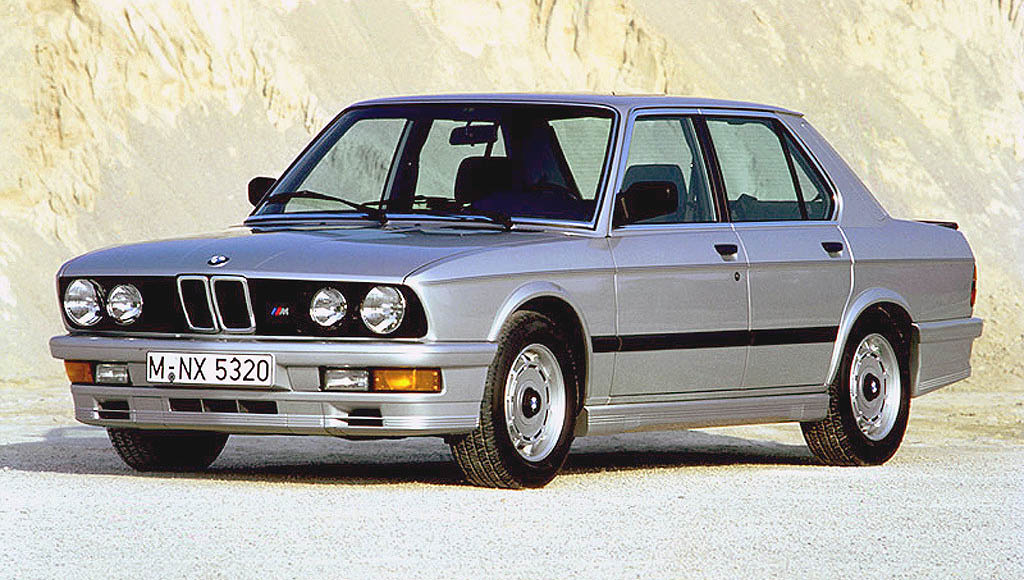Introduction and Design:
Introduced in 1981, the BMW E28 series was the second generation of BMW’s renowned 5 Series mid-size luxury cars. The E28 series succeeded the E12 series and was in production until 1988. The design of the E28 series, just like its predecessor E12, was led by French automotive designer Paul Bracq. Born in Bordeaux, France, in 1933, Bracq had a passion for design from a young age.
In 1953, he began his career in the automotive industry when he joined French car manufacturer Simca. After a brief period with Simca, he moved to the design team of French aircraft manufacturer Sud Aviation, where he worked on the Caravelle jet. In 1970, after a successful stint at Mercedes-Benz, Bracq moved to BMW. As Director of Design, he oversaw the designs of the first generation of the BMW 5 Series (E12) and the second generation of the BMW 7 Series (E23), both of which became hugely successful and influential models for BMW.
Bracq’s design philosophy of clean, uncluttered lines continued with the E28. He maintained the large glass surfaces and the signature “Hofmeister kink” in the C-pillar that he first introduced with the E12. However, the E28 received a few subtle updates including slightly larger kidney grilles, more pronounced wheel arches, and repositioned, sleeker taillights. This model marked a transition in the brand’s design language, which started to become more aerodynamic in line with the trends of the 1980s.
MODELS / YEARS
Model Variants and Specifications:
Over the course of its production, the E28 came in various forms, including petrol and diesel variants, ranging from the base 518i to the high-performance M5. Each of these models differed in terms of engine specifications, standard equipment, and optional extras.
However, even the base model 518i delivered solid performance, with its 1.8L inline-four engine producing 105 horsepower. All E28s had a front-engine, rear-wheel-drive layout, and most models were fitted with a 5-speed manual transmission, although a 4-speed automatic was also available.
The BMW E28 was offered with a variety of engines throughout its lifespan, ranging from inline-four to inline-six and even a turbocharged diesel engine for certain markets – a first for BMW.
- Inline-four engines: The 518i was equipped with a 1.8L M10B18 I4 producing 103 hp and 105 lb-ft of torque.
- Inline-six engines: These were available in the 520i, 525i, 528i, and 533i models, with power ranging from 125 hp in the 520i to 181 hp in the 533i. The top of the range 535i used a 3.5L M30B34 I6 engine producing 218 hp and 224 lb-ft of torque.
- M5: The M5 model, introduced in 1985, was powered by a 3.5L M88/3 I6 engine, producing 286 hp and 251 lb-ft of torque. This engine was a modified version of the one used in the BMW M1 sports car.
- Diesel: The 524td model featured a 2.4L M21 inline-six turbocharged diesel engine producing 115 hp and 155 lb-ft of torque. This model was the first BMW to feature a diesel engine.
Transmission:
The E28 was available with a variety of manual transmissions, ranging from a 4-speed to a 5-speed. A 3-speed automatic was also available, and later in production, a 4-speed automatic was introduced.
Dimensions and Weight:
The E28 had a length of 4,620 mm, a width of 1,700 mm, and a height of 1,415 mm. The curb weight of the base model was approximately 1,140 kg, although this varied depending on the model and optional equipment.
Technology and Safety:
The E28 series showcased BMW’s commitment to incorporating advanced technology and safety features. The series introduced BMW’s first ever electronic engine management system, the Bosch Motronic. This system controlled fuel injection and ignition, improving fuel efficiency and overall performance.
In terms of safety, the E28 was one of the first BMWs to offer anti-lock brakes (ABS) as an option, which eventually became standard on all models. The E28 also introduced the Check Control panel, which alerted the driver of potential issues, such as low oil level or a burnt-out light bulb.
Legacy:
The E28 series was replaced by the E34 in 1988 but its impact on the automotive industry, particularly on luxury sedans, was significant. The E28 embodied BMW’s core values of delivering driver-focused cars that offered top-tier performance, luxury, and technology. Notably, the E28 M5 established the concept of a high-performance luxury sedan, setting the stage for many similar cars in the future.
Today, the E28, especially the M5 variant, is considered a classic. Its combination of performance, luxury, and relative rarity has made it highly sought-after among car enthusiasts and collectors. Its timeless design, spearheaded by Paul Bracq, and its technological innovations have left a lasting impact on the BMW brand and the wider automotive industry.

